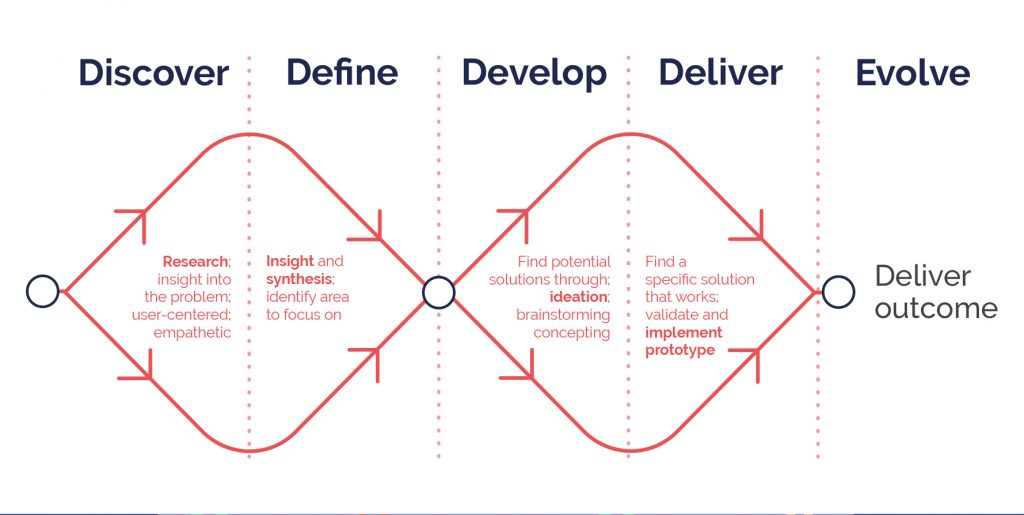Everyone is desperate for content. Widely acknowledged as essential in delivering an exceptional brand experience for the modern consumer, ‘content’ is an increasingly important part of the mix.
In this year’s Finance Marketing Survey, we discovered that 77% of finance marketers are increasing their investment in content in 2018/19, by far the largest increase in any area of spending for finance marketers.
However, despite the increased focus on content, its effectiveness remains in question. Not because it isn’t hugely effective – it clearly is – but because more often than not, the content being produced is not designed for its audience.
The problem with content creation
Many marketers are still trapped in the notion of ‘creating copy’, ‘doing videos’ and sending the dreaded ‘newsletter’ – content for the sake of doing content.
Content creation is a traditional approach that falls short of meeting audience needs. Marketers often create content that is more focused on what it wants to say than what the user needs to know.
Instead of creating content, it’s time to start designing it, changing how you build your model of engaging with your audiences through content to focus on them and their needs.
Build on your foundations
Let me acknowledge, if you are creating regular content, that’s a good start.
Getting into the habit of delivering content is the hardest one to establish and if you have a content plan, you’ve completed the first step.
If you’ve deployed marketing automation (MA) and are providing nurture content, then you’re ahead of most. You may even have integrated your MA with your other systems (CRM and website) to close the loop on your content and customer behaviour. If you have, then you have the tools in place to fulfil content design.
Now you just need to connect your tools with your customers and shifting to a content design approach should be your next step.
What is content design?
I’ve seen a few definitions and while this is peak jargon, this one sums it up well:
‘Content design is a systematic and evidence-based methodology for guiding marketers to create content that meets the needs of your audiences along their journey.’
In plain English, it’s creating content that aligns with the needs of your customers.
At this point it’s probably a good idea to address the concept of content. In this context, content is considered anything that can be read, viewed, or listened to by your prospects and customers throughout their experience with you.
While much of the focus of content design is on digital channels, it’s a discipline that should be applied across every touchpoint if it’s to be delivered effectively.
This includes digital copy, video, podcasts, editorial, call centre scripts, printed collateral, forms and any other media where your content is designed to help your audience achieve a goal, complete a task, or make a decision.
The reason for calling the process ‘design’ is that it comes from a human centered design methodology and aligns closely with service design, focusing on addressing points in a customer’s journey and meeting their needs.
Why content design is the answer
Content design approaches the creation of content from a fundamentally different perspective – your customers’.
This is why traditional content that is more focused on what it wants to say than what the user needs to know flounders. It makes content difficult to understand and act on.
Good content design empowers your customers to do or find out what they need simply and quickly using the most appropriate content format available. It is based on insights about their behaviour, analytics and feedback.
It also allows you to create content to meet the individual needs of your customers. It’s not a one size fits all approach. It’s designed to deliver outcomes that meet the specific needs you’ve identified for your
How does it work?
Content design places people at the heart of a product or service. Aligning with a service design process, or being based on existing customer insights and journeys, it builds your content directly around our users’ needs.
In essence, content design:
- Uses empathy as a design tool
- Is delivered through sprints or other fast iterations
- Uses customer feedback and insights to refine your outcomes
- Creates positive experiences with every interaction
Content design uses the double diamond approach, similar to other service design approaches:

This should be a rapid process, focusing on key interactions and actions, as a standalone part of, or within an entire journey.
It allows for the creation and testing of multiple pieces of content within one sprint. These can be micro content, like a message on a pop-up on a website, or a piece of animated video content, each piece adding to the overall experience and providing consistency and performing a task across your customers’ journey.
Don’t forget your empathy
One last thing to remember is applying empathy is the cornerstone of content design.
By understanding your audiences’ emotional and rational needs, you can build content that empowers them to meet that need and to move on.
This is the essence of content design, to create content pieces that address diverse needs successfully.
It allows you to consider the broader context of their journey and the function of your content. For example:
- How did they arrive at your content – where did they come from and what do they know already?
- Are they informed, or do you need to inform them?
- The goals and motivations that brought them to the content
- What do they want to do next? How will you help them do that?
It also means is that you may end up producing multiple versions of a single piece of content designed to meet the needs of your customers’ personas.
But if those content pieces actually deliver a more positive experience and outcomes for you and customers, then isn’t that the whole point of creating content in the first place?








